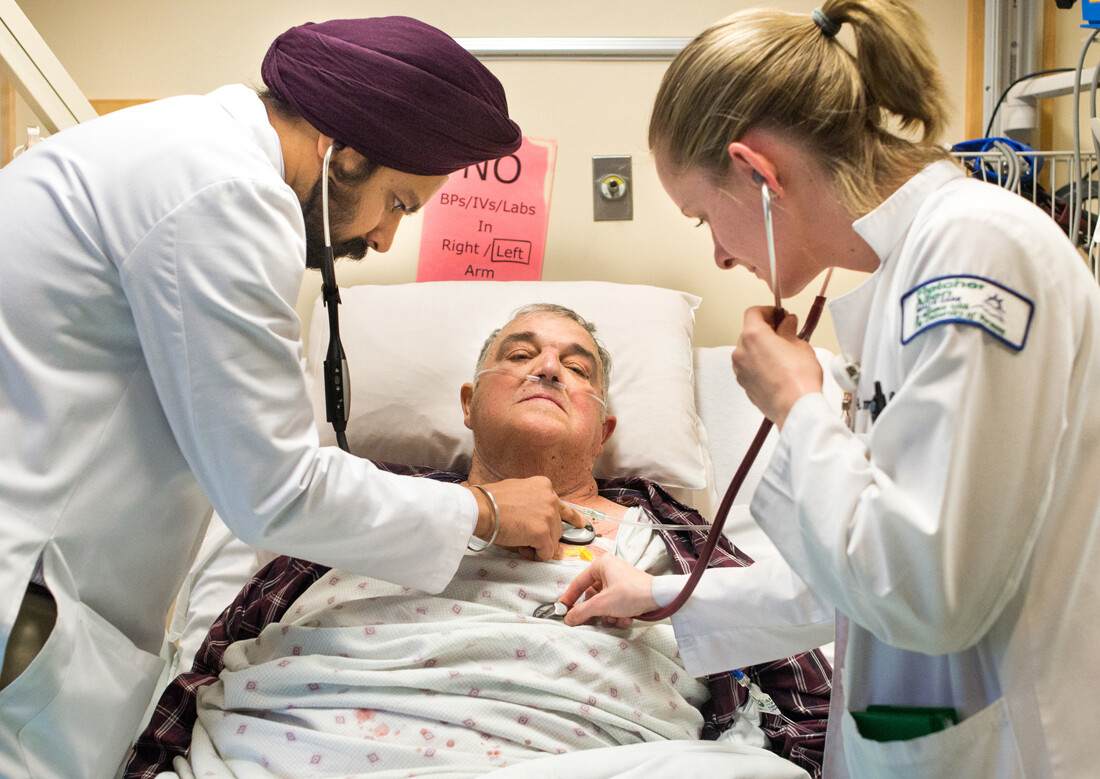As America undergoes health care reform, it’s important to consider what “universal access” means in a country undergoing significant demographic change.
For health care experts like Patricia Prelock, Ph.D., dean of the College of Nursing and Health Sciences at the University of Vermont, these changing demographics underscore the importance of cultural diversity in a profession where the patient-provider relationship is key to determining the quality of care.
“Interacting with a health care professional is such a personal relationship that it’s important that the provider you have understands the values and beliefs of the individual with whom they are working,” Prelock explains.
“The patients we’re serving now will look very different from the patients we’re going to be serving in 20 years,” she says. “If we don’t have the cultural context of the people we’re serving, we’re not going to be effective as health care professionals. It’s not just in medicine; it’s in nursing, speech pathology, physical therapy, radiation therapy – all the health professions.”
A Need to Improve Cultural Diversity in Health Care
Consider these statistics from the U.S. Census Bureau:
- In 2043, the so-called “minority” populations will become the majority in the United States. However, no one single group will make up a majority. The non-Hispanic white population will remain the largest single group. By 2060, “minorities” – meaning those who are not of white European descent – are projected to comprise 57 percent of the population, up from 37 percent today.
- By 2060, nearly one in three Americans will be Hispanic (the term used by the U.S. Census), up from one in six today. The Hispanic population will more than double, to 128.8 million.
- The percentage of black Americans will increase to 14.7 percent — 61.8 million — in 2060.
- Asian Americans will double to 34.4 million in 2060, comprising 8.2 percent of the total population.
- The number of international migrants is expected to grow by 41.2 million.
- The U.S. population is aging. By 2060, the number of Americans age 65 and over is expected to double to 92 million. Those 85 and older will make up 4.3 percent – 18.2 million — of the overall population.
Nursing, health and medical schools across the country – including those at UVM — are working to recruit students and faculty of color to ensure that health care professionals better reflect the patients they serve.
Changes in Nursing
Nursing, for example, traditionally has been composed of middle-aged white women but has slowly seen changes in the makeup of the workforce. According to the AFL-CIO’s Department for Professional Employees, the average age of nurses has increased over the past 15 years from 39 to 43, but younger people are increasingly joining the profession. Many of them are racially and ethnically diverse. In addition, the number of male nurses has increased.
And although the number of white, non-Hispanic nurses hovers around 70 percent, younger graduates of nursing schools are getting plenty of training in learning how to work with patients from a variety of backgrounds. In academic lingo, it’s called “cultural competency,” a term that is becoming much more commonly used as schools, universities, workplaces, governments and other organizations work to ensure they better serve their ever-changing communities.
“In the standards from our accrediting bodies that guide our curriculum, in our learning outcomes and performance competencies, we work to infuse cultural and linguistic diversity. It’s part of everything we do,” Prelock notes.
That means that even though UVM may require all undergraduate students to take six credits in courses covering diversity issues, the College of Nursing and Health Sciences also makes sure that students get the chance in all classes related to patient care to consider ways to better serve patients who are different from them: different religions, races, ethnicities, sexual orientations, genders, abilities, ages and more.
Health Disparities Remain
Across the country, health care experts illuminate yet another reason why it’s important for students and professionals to study and understand cultural diversity: to reduce health disparities.
“Missing Persons: Minorities in the Health Professions,” a report from the Sullivan Commission on Diversity in the Healthcare Workforce, an initiative of the W.K. Kellogg Foundation, goes so far to state: “The fact that the nation’s health professions have not kept pace with changing demographics may be an even greater cause of disparities in health access and outcomes than the persistent lack of health insurance for tens of millions of Americans.”
The U.S. Agency for Healthcare and Research Quality, a division of the U.S. Department of Health and Human Services, measures these health disparities annually. It recently noted that the “overall health of the American population has improved over the past few decades, but not all Americans have benefitted equally from these improvements. Minority populations, in particular, continue to lag behind whites in a number of areas, including quality of care, access to care, timeliness, and outcomes. Other health care problems that disproportionately affect minorities include provider biases, poor provider-patient communication, and health literacy issues.”
“It does make a difference,” Prelock says, “if you receive health care from a person who represents you, someone with whom you can connect at a different level.”
Excellence in Health Care
By embracing cultural competence and diversity in health care, providers can improve the overall quality of care, according to experts.
Medical schools and teaching hospitals have moved away from the antiquated “diversity versus excellence model” – the product of ensuring compliance with civil rights legislation and affirmative action – and now should employ “strategies to better capture, leverage, and respond to the rich diversity of human talents and aptitudes,” according to Mark A. Nivet, Ed.D., chief diversity officer for the Association of American Medical Colleges’ Diversity Policy and Programs. “Fundamentally, it requires a mental shift that frames diversity as a means to address quality health outcomes for all, rather than an end goal in and of itself.”




